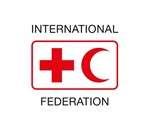An online web portal that helps reconnect families who have lost contact as a consequence of migration.
In collaboration with the ICRC, National Societies offer individuals who are looking for their family members the possibility of posting their photo onto a website called tracetheface.org or on posters displayed in various locations throughout Europe. The photo is taken at the Red Cross or Red Crescent office.
Only the nature of the relationship with the relative is made public; all other personal data remains confidential, including the migrant’s name and location. If a family member recognizes a photo of their loved one, they can click on a link to send a message to the National Society concerned. By April 2016, there were 28 National Societies in Europe participating in the programme and the website hosted over 870 photos of individuals searching for missing loved ones. The programme will soon be extended to several countries of transit and countries of origin outside Europe.
Trace the Face recorded 410,930 page views between September 2013 and April 2016.
Design. [P1] Focuses on the needs of migrants to relocate missing family.
Implementation. [P7] National Societies and the ICRC collaborate along the migratory trails to optimize their humanitarian action, including restoration of family links.
- Insufficient awareness among beneficiaries of the service and limited access to the internet of some beneficiaries.
- Complex tracing processes across numerous borders.
- It will be important to extend Trace the Face to other regions where relevant.
- It is important to develop a common, secure data sharing platform for European National Societies, with records of all sought persons and enquirers.
Smart practices
Smart practices report and database survey
About the report
People migrate in pursuit of a better life for themselves and their families. As described in the International Federation of Red Cross and Red Crescent Societies’ (IFRC) Policy on Migration, “migrants are persons who leave or flee their habitual residence to go to new places – usually abroad – to seek opportunities or safer and better prospects.
Read more
About the International Federation

